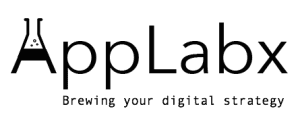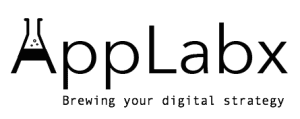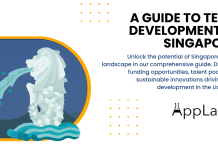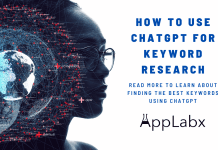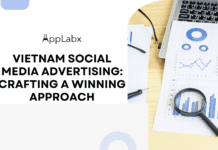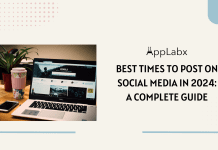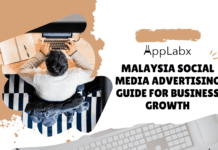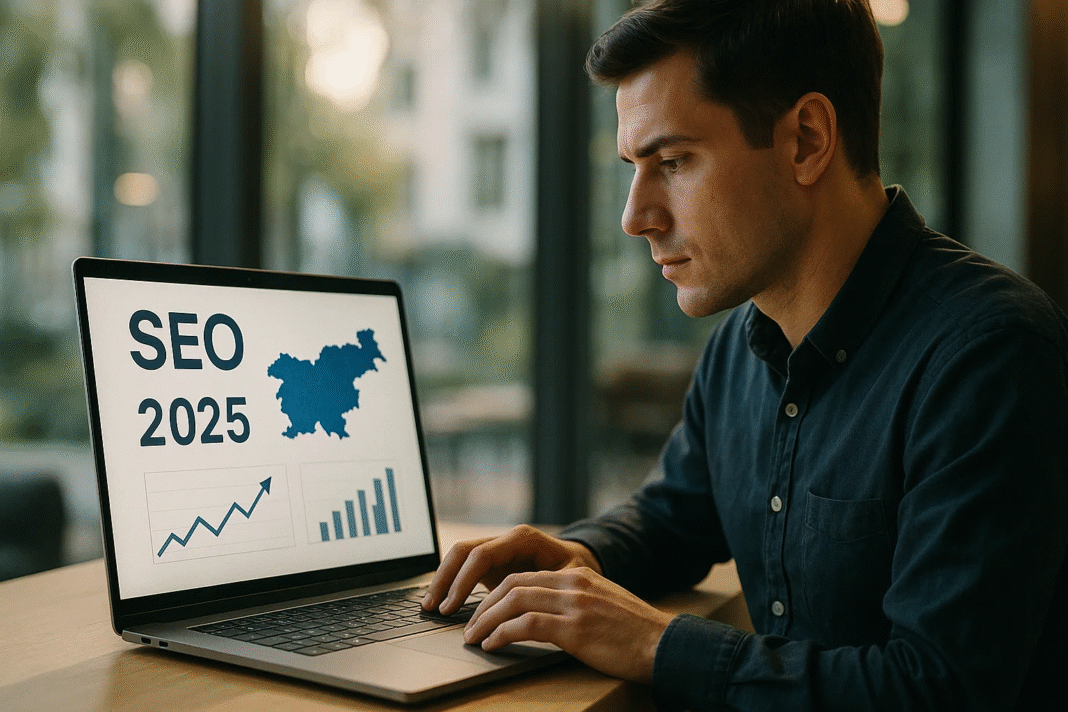Key Takeaways
- AI-driven search and structured data are reshaping how Slovenian businesses appear in results, making E-E-A-T credibility essential.
- Mobile-first and local SEO remain critical, with fast-loading, responsive sites and optimized Google Business Profiles driving visibility.
- Content strategies focused on user intent and social-commerce integration are powering e-commerce growth and higher conversion rates.
Search engine optimization (SEO) in Slovenia has undergone significant transformation in recent years, and by 2025 it has become one of the most crucial pillars of digital growth for both local and international businesses. With Slovenia’s digital economy expanding rapidly and internet penetration reaching near-universal levels, the need for robust SEO strategies has never been greater. Companies are no longer viewing SEO as an optional marketing add-on; instead, it is now considered a critical investment for long-term online visibility, brand trust, and revenue generation.
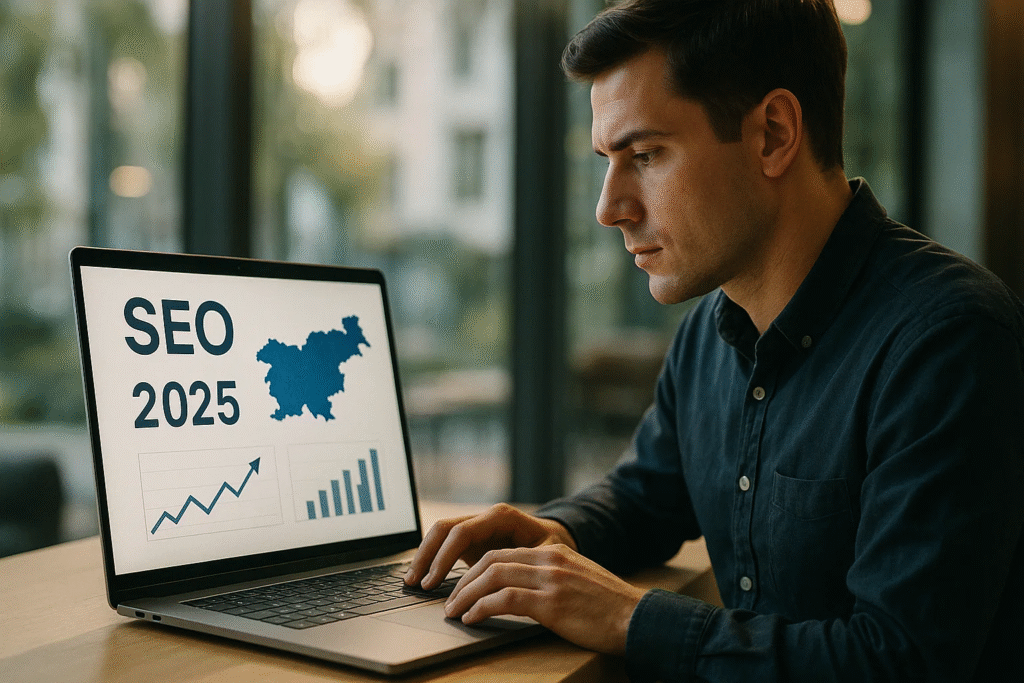
In Slovenia, consumer behavior is changing alongside global digital trends. The rise of mobile-first browsing, increasing adoption of voice search, and the dominance of Google as the primary search engine have reshaped the digital marketing landscape. Businesses that once relied on traditional marketing methods are now shifting focus toward advanced SEO strategies that integrate AI-driven tools, semantic search optimization, and localized content targeting Slovenian audiences with precision.
The Slovenian Digital Landscape in 2025
- High internet usage: More than 85% of Slovenians are active internet users, creating an immense opportunity for businesses to reach potential customers through search.
- E-commerce expansion: Online shopping is growing steadily, with local and cross-border e-commerce driving the need for strong SEO strategies to compete for digital visibility.
- Search engine dominance: Google continues to hold a majority market share in Slovenia, making optimization for Google’s evolving algorithms a key priority.
- Mobile-first experiences: With the majority of Slovenians accessing the web through mobile devices, mobile SEO and Core Web Vitals performance play a decisive role in rankings.
Global and Local Trends Impacting SEO in Slovenia
The Slovenian SEO market is strongly influenced by international trends, yet it also retains unique characteristics shaped by language, culture, and regional consumer patterns. Businesses in Slovenia are now:
- Embracing AI in SEO: Tools powered by artificial intelligence are being used for content generation, predictive analytics, and search intent optimization.
- Adapting to AI search and zero-click results: With the rise of Google AI Overviews and instant answers, Slovenian businesses must create authority-driven, structured content to remain visible in search.
- Optimizing for voice search: The Slovenian language presents challenges and opportunities for voice search optimization, as more users rely on digital assistants for daily queries.
- Leveraging local SEO: Small and medium businesses are investing in local SEO through Google Business Profiles, local citations, and Slovenian-language content to capture “near me” searches.
Why SEO Matters for Businesses in Slovenia in 2025
In a competitive digital environment, SEO in Slovenia is no longer just about ranking higher on Google. It is about building trust, ensuring brand discoverability, and driving targeted traffic that converts. Companies that invest in SEO gain:
- Higher ROI compared to traditional marketing
- Sustainable growth through organic visibility
- Stronger customer engagement via localized strategies
- Resilience against market shifts and advertising costs
The Importance of Strategic Investment in Slovenian SEO
Forward-thinking businesses in Slovenia recognize that effective SEO in 2025 requires a long-term, multi-faceted approach. Partnering with expert SEO agencies, investing in data-driven keyword strategies, and staying ahead of Google’s AI-powered evolution are key differentiators. Companies that adapt to these changes now will not only secure higher rankings but also establish authority and trust in Slovenia’s fast-evolving digital economy.
But, before we venture further, we like to share who we are and what we do.
About AppLabx
From developing a solid marketing plan to creating compelling content, optimizing for search engines, leveraging social media, and utilizing paid advertising, AppLabx offers a comprehensive suite of digital marketing services designed to drive growth and profitability for your business.
At AppLabx, we understand that no two businesses are alike. That’s why we take a personalized approach to every project, working closely with our clients to understand their unique needs and goals, and developing customized strategies to help them achieve success.
If you need a digital consultation, then send in an inquiry here.
Or, send an email to [email protected] to get started.
The State of SEO in Slovenia in 2025
- Slovenia’s Digital Foundation in 2025: A Macroeconomic and Behavioral Analysis
- E-commerce and the Digital Consumer: A Deep Dive into the Slovenian Market
- Pillars of SEO Success in the Slovenian Market: 2025 Strategic Imperatives
- The SEO Industry in Slovenia: Cost, Competition, and Case Studies
- Strategic Recommendations for 2025 and Beyond
1. Slovenia’s Digital Foundation in 2025: A Macroeconomic and Behavioral Analysis
A. Digital Connectivity and User Demographics
The Slovenian digital ecosystem in 2025 presents a highly developed, mobile-driven, and behaviorally nuanced environment. Understanding the interplay of connectivity, demographics, and digital behaviors provides the foundation upon which effective SEO strategies must be crafted.
Digital Connectivity and Market Penetration
- Population and Internet Usage
- Total population: 2.12 million
- Internet users (January 2025): 1.94 million
- Internet penetration: 91.5%
- Year-on-year change: –0.4% (decline of approx. 8,300 users)
- Despite the decline in total user count, usage intensity and connectivity quality are significantly increasing.
- Mobile-First Landscape
- Active mobile connections: 2.75 million (≈130% of total population, reflecting multi-device usage).
- Broadband connectivity: 94.4% of connections (3G, 4G, or 5G).
- Median mobile download speed: 84.39 Mbps, marking a 42.8% annual increase.
- Median fixed internet speed: 94.60 Mbps, a 4.3% increase.
- Strategic SEO Implications
- A saturated internet user base paired with rising bandwidth creates demand for speed-optimized, mobile-responsive platforms.
- Websites with poor load performance will suffer higher bounce rates, weakening both search rankings and conversion efficiency.
- The growing dependence on mobile means mobile-first indexing and responsive design are non-negotiable SEO priorities.
Demographic Structure and Consumer Dynamics
- Median Age: 44.7 years
- Age Distribution:
- 65+ years: 22.2% (largest cohort, shaping senior-focused digital services).
- 35–44 years: 13.8% (high-income, digitally savvy segment).
- 25–34 years: 10.7% (core e-commerce and social search users).
- Behavioral Insights:
- Younger demographics drive mobile search, e-commerce, and AI-driven discovery tools.
- Older demographics represent opportunities in healthcare, financial planning, and lifestyle-related digital content.
- The duality of audiences highlights the need for diversified SEO strategies tailored by age-specific search intent.
Comparative Data Matrix: Slovenia’s Digital Indicators (2025)
| Indicator | Value (2025) | Year-on-Year Change | SEO Relevance |
|---|---|---|---|
| Population | 2.12 million | – | Defines market ceiling |
| Internet Users | 1.94 million | –0.4% | Stable but highly saturated |
| Internet Penetration | 91.5% | – | Mature market |
| Mobile Connections | 2.75 million | +1.8% est. | Multi-device reliance |
| Broadband Share of Mobile | 94.4% | +2.1% | Optimized digital infrastructure |
| Median Mobile Download Speed | 84.39 Mbps | +42.8% | Need for speed-driven SEO |
| Median Fixed Download Speed | 94.60 Mbps | +4.3% | Stable but secondary to mobile |
| Median Age | 44.7 years | +0.2 years | Signals aging user base |
| Largest Demographic Group (65+) | 22.2% | Growing | Senior-focused SEO niches |
Key Strategic Takeaways for SEO in Slovenia 2025
- Mobile supremacy dictates optimization for mobile-first indexing, accelerated loading, and responsive UX.
- Aging demographics create untapped SEO opportunities in sectors catering to seniors, while younger audiences fuel search behavior on social platforms and e-commerce ecosystems.
- Connectivity intensity means Slovenian users have zero tolerance for lag or poor interactivity, forcing brands to adopt technical SEO best practices.
- The slight decline in overall internet users should not be mistaken for digital stagnation; rather, it highlights a shift from quantity to quality of digital engagement.
B. Search Engine & Social Media Landscape
The Slovenian digital environment in 2025 is defined by an overwhelming concentration of search traffic in the hands of Google, alongside a socially engaged user base that increasingly blends search behaviors with social discovery. For businesses and marketers, this dual reality underscores the need for Google-centric SEO strategies complemented by integrated social media optimisation.
Search Engine Market Structure
- Google Dominance
- Market share (July 2025): 93.93%
- SEO strategies in Slovenia revolve almost exclusively around Google’s search algorithms, ranking factors, and AI-driven updates.
- Alternative search engines play an insignificant role in influencing organic visibility, making Google optimisation a strategic imperative.
- Secondary Players
- Bing: 4.25% market share, insufficient to significantly alter SEO strategies.
- Other engines (Yahoo, DuckDuckGo, Yandex): negligible presence.
- While largely inconsequential, minor search engines may still have a role in niche verticals or cross-border targeting, particularly in multilingual SEO efforts for businesses serving international audiences.
- Strategic Implications
- Prioritisation of Google Search Console insights, Core Web Vitals, and AI-enhanced search features.
- Exclusive attention to Google’s Search Generative Experience (SGE), rich snippets, featured snippets, and AI Overviews, which increasingly shape click-through rates.
- Technical SEO, schema markup, and content depth are more important than multi-engine strategies.
Social Media Penetration and User Behavior
- User Base Overview
- Active social media identities (January 2025): 1.58 million
- Share of total population: 74.6%
- Share of total internet users: 81.5%
- Reported decline from 2024: –3.1% (≈50,000 accounts), likely influenced by data methodology changes rather than genuine disengagement.
- Behavioral Patterns
- Social platforms function as complementary discovery engines, influencing purchase intent and brand visibility.
- Younger demographics increasingly engage in search behaviors within platforms like Instagram, TikTok, and YouTube, reducing reliance on traditional search engines for certain categories (e.g., product reviews, lifestyle content, trends).
- Older demographics use social platforms for community engagement, information gathering, and lifestyle-related updates, aligning with sectoral SEO opportunities.
- Strategic Implications
- Social media is not a replacement for search but a reinforcing mechanism for SEO.
- The growing search-social synergy suggests that content must be optimised for both SERP rankings and social discoverability.
- Integration of short-form video, UGC-driven content, and influencer collaborations is crucial for amplifying search visibility and authority signals.
Comparative Data Matrix: Search vs Social Media in Slovenia (2025)
| Metric | Value (2025) | Change from 2024 | Strategic Relevance |
|---|---|---|---|
| Google Market Share | 93.93% | +0.5% est. | SEO focus remains Google-exclusive |
| Bing Market Share | 4.25% | Stable | Marginal influence |
| Other Engines (combined) | <2% | Negligible | Niche or multilingual use only |
| Active Social Media Identities | 1.58 million | –3.1% | Strong integration with SEO |
| Social Media as % of Population | 74.6% | – | High saturation rate |
| Social Media as % of Internet Users | 81.5% | +0.5% est. | Indicates growing reliance on platforms |
Key SEO Takeaways for Slovenia in 2025
- Google is the uncontested gatekeeper of search visibility, making deep alignment with its ranking systems critical.
- Social media continues to serve as both a search alternative and an SEO amplifier, necessitating integrated campaigns.
- Declines in reported user figures should be interpreted cautiously, as engagement levels and platform reliance remain strong.
- The evolution of search-social synergy indicates that Slovenia’s SEO landscape is moving toward a holistic digital ecosystem where organic ranking, brand authority, and social signals converge.
2. E-commerce and the Digital Consumer: A Deep Dive into the Slovenian Market
A. E-commerce Market Growth and Projections
Slovenia’s e-commerce landscape in 2025 is characterised by steady growth, increasing consumer confidence, and a digital ecosystem that continues to mature. Businesses operating within this market are faced with both opportunities and challenges: while online shopping adoption rates are climbing, they remain marginally lower than broader European averages, making SEO-driven strategies pivotal in capturing and retaining consumer attention.
E-Commerce Market Growth and Economic Outlook
- Market Revenue and Growth
- Revenue (2024): US $599 million
- Projected 2025 Growth: 5–10% year-on-year
- Long-Term Growth (2025–2033): 7.5% CAGR
- Drivers of expansion:
- Rising smartphone and internet penetration
- Increased disposable income levels
- Convenience-driven consumer behavior shifting toward digital-first purchasing
- Comparative European Context
- Online shopping adoption (Slovenia): 72%
- European average adoption: 76%
- Slovenia’s slightly lower rate signals growth potential and untapped consumer segments, especially in rural and older demographics.
Consumer Behavioural Patterns
- Shopping Frequency
- 49% of Slovenian online shoppers classified as “regulars” (at least one purchase per month).
- Indicates high engagement levels among existing adopters, despite lower overall penetration compared to Europe.
- Spending Habits
- Average online purchase value (domestic stores): €104
- Stability of purchase value suggests consumer trust in online transactions and consistent willingness to spend.
- Growth potential lies in expanding product categories, increasing cross-border e-commerce, and leveraging personalisation strategies.
- Sectoral Preferences
- Fashion, electronics, and household goods remain leading categories.
- Gradual rise in health, wellness, and subscription-based digital services.
- Increased openness to international marketplaces (e.g., Amazon, Zalando), creating a dual challenge for local businesses to retain competitiveness.
Comparative Data Matrix: Slovenia’s E-Commerce Indicators (2024–2025)
| Indicator | 2024 Value | 2025 Projection | Strategic Implication |
|---|---|---|---|
| Market Revenue | US $599 million | +5–10% growth | Steady expansion |
| Online Shopping Adoption | 72% | Closing gap vs. EU avg. (76%) | Untapped market segments |
| Regular E-Shoppers | 49% | Stable to rising | Consistent customer base |
| Avg. Domestic Purchase Value | €104 | Stable | High-value but predictable basket size |
| Long-Term CAGR (2025–2033) | – | 7.5% | Promising outlook |
SEO Implications for E-Commerce in Slovenia
- Mobile-First Optimisation
- With rising smartphone penetration, e-commerce platforms must adopt responsive, fast-loading mobile interfaces.
- Mobile-first indexing and Core Web Vitals optimisation will directly influence search performance.
- Local vs. International Competition
- Slovenian consumers increasingly shop across both domestic and global platforms, requiring local businesses to enhance local SEO strategies (geo-targeting, Slovenian language optimisation, local reviews).
- Cross-border competition underscores the importance of high-quality content, brand differentiation, and authority-building through SEO.
- Content and Personalisation
- High regular shopper engagement presents opportunities for personalised product recommendations, SEO-driven content marketing, and structured data implementation to improve visibility in Google Shopping results.
- Voice and AI Search Adaptation
- Growth in AI-driven and voice-enabled search signals the need to optimise product pages for conversational queries and long-tail keywords.
- Businesses should align product descriptions and FAQs with natural language search trends.
B. E-commerce Consumer Behavior & Trends
The behavior of Slovenian online consumers in 2025 reflects a sophisticated, value-driven, and socially influenced purchasing ecosystem. Understanding these trends is essential for marketers and businesses seeking to optimise SEO strategies and improve digital visibility.
Product Preferences and Purchase Drivers
- Popular Product Categories
- Footwear leads online purchasing activity, indicating strong brand and style consciousness.
- Beauty and health products maintain significant market traction, driven by wellness trends and an emphasis on personal care.
- Fashion apparel remains a consistently high-demand segment, underpinned by frequent seasonal purchases.
- Decision-Making Factors
- Price sensitivity is paramount, guiding the majority of purchasing decisions.
- Other factors influencing consumer choice include product quality, authenticity, and delivery convenience.
- SEO strategies must therefore integrate keyword targeting around pricing, discounts, and promotions to align with consumer priorities.
Sustainability and Second-Hand Market Trends
- Consumer-to-Consumer (C2C) Engagement
- 75% of regular e-shoppers engage with second-hand or resale platforms.
- Motivations include cost savings, environmental sustainability, and the ethical appeal of reuse.
- Local and Regional Market Preferences
- Rising interest in locally produced goods and micro-marketplaces reflects consumer demand for transparency and economic support for local businesses.
- SEO strategies can leverage keywords and content themes such as “sustainable,” “local,” and “made in Slovenia” to capture eco-conscious and authenticity-driven audiences.
- Strategic Implications for Brands
- Businesses should develop content and product listings emphasizing sustainability credentials, origin transparency, and local production.
- Integrating structured data and schema markup for sustainability and provenance can enhance rich snippet visibility in Google search results.
Social Media Influence on E-Commerce
- Social Commerce Penetration
- 82% of regular Slovenian e-shoppers use social media to inform their purchase decisions.
- 60% purchase directly through social platforms, highlighting the growing importance of social commerce.
- Platform-Specific Insights
- YouTube: 1.58 million users as of early 2025; video content plays a critical role in product discovery and brand education.
- Facebook: 1.01 million users; community engagement, reviews, and targeted ad campaigns drive traffic and conversions.
- Integration of social signals with SEO strengthens overall search visibility and domain authority.
- Strategic SEO Implications
- Businesses must adopt a holistic SEO strategy that encompasses traditional search engines and social media platforms.
- Optimisation of video content, social posts, and platform-specific landing pages is crucial to capture the growing social-commerce-driven traffic.
- Leveraging UGC (user-generated content) and influencer collaborations can enhance both search rankings and social engagement metrics.
Comparative Data Matrix: E-Commerce Consumer Trends in Slovenia (2025)
| Consumer Behavior Metric | Value (2025) | Strategic Insight |
|---|---|---|
| Regular E-Shoppers Engaged in C2C Platforms | 75% | Sustainability-focused SEO opportunities |
| Social Media Use for Shopping | 82% | Integrated social-commerce SEO strategy required |
| Direct Social Platform Purchases | 60% | Optimisation for platform-specific commerce |
| Leading Product Categories | Footwear, Beauty/Health, Fashion | Content and keyword prioritisation |
| Interest in Local/Regional Products | Rising | Keywords: “local,” “sustainable,” “made in Slovenia” |
Key Takeaways for SEO Strategy
- SEO must evolve beyond search engines to include social commerce and video-driven discovery.
- Sustainability and local production are emerging as critical content pillars for Slovenian consumers.
- Businesses targeting Slovenian e-shoppers should focus on price competitiveness, high-quality visuals, and transparent sourcing to improve engagement and conversions.
- Integration of structured data, social signals, and content marketing ensures a holistic digital presence, capturing both search and social traffic.
C. Regulatory and Compliance Landscape
Operating within Slovenia’s digital and e-commerce ecosystem requires businesses to navigate a complex regulatory framework, shaped both by national legislation and European Union directives. Compliance is not only a legal requirement but also a strategic factor in building trust, enhancing brand reputation, and improving search engine performance.
Data Protection and GDPR Compliance
- Central Role of GDPR
- The General Data Protection Regulation (GDPR) remains the cornerstone of data protection for all businesses operating in Slovenia.
- All personal data processing must be lawful, transparent, and based on explicit consent.
- Pre-ticked consent boxes are prohibited; businesses must ensure affirmative, informed action from users.
- E-Commerce Implications
- Cookie consent management: Websites must provide clear, granular options for cookies and tracking.
- Data collection for personalized marketing: Only permitted with proper consent, directly impacting retargeting campaigns, email marketing, and personalization strategies.
- SEO and trust signals: Transparent privacy practices, visible consent management, and GDPR-compliant forms enhance user trust and can positively influence search rankings.
- Strategic Takeaways
- Businesses should integrate privacy-by-design principles in website development and content creation.
- Regular audits and compliance checks are critical to avoid penalties and reputational damage while maintaining SEO efficiency.
Corporate Registration and Legal Requirements
- Business Structure and Registration
- Most common entity type: Limited Liability Company (d.o.o.)
- Minimum share capital required: €7,500
- Registration processes involve Slovenian Business Register compliance and adherence to local corporate governance standards.
- Taxation and VAT Compliance
- Foreign and domestic businesses must register for VAT if their annual turnover exceeds the threshold.
- Compliance with VAT regulations affects pricing strategy, invoicing, and cross-border e-commerce operations.
- Product Standards and Certifications
- All products must comply with EU regulations and possess the necessary certifications, such as the CE mark for safety and quality assurance.
- Non-compliance may result in product removal from platforms, fines, or reputational damage, which indirectly impacts SEO visibility and online trust.
Comparative Compliance Matrix: Key Slovenian Regulatory Requirements
| Regulatory Area | Requirement/Standard | SEO & Business Implications |
|---|---|---|
| Data Protection (GDPR) | Explicit user consent, lawful processing | Trust signals, compliance-driven SEO advantage |
| Cookie Management | Granular opt-in consent | Enhances user experience and SERP credibility |
| Business Structure (d.o.o.) | Minimum €7,500 share capital | Legal entry into Slovenian market |
| VAT Registration | Mandatory for qualifying businesses | Accurate pricing, invoicing compliance |
| Product Certifications | CE mark and EU compliance | Ensures product credibility and listing eligibility |
Strategic Implications for SEO and Digital Marketing
- Compliance as a ranking factor: Google increasingly rewards sites that provide transparent, trustworthy user experiences, making GDPR compliance a tangible SEO advantage.
- User trust and engagement: Websites that adhere to privacy regulations are more likely to retain users and reduce bounce rates, positively influencing search performance.
- International businesses: Compliance with Slovenian and EU regulations enhances market credibility, enabling smoother expansion and facilitating localized SEO strategies for language, culture, and legal alignment.
3. Pillars of SEO Success in the Slovenian Market: 2025 Strategic Imperatives
A. Content and Keyword Strategy: The Shift from Volume to Intent
Pillars of SEO Success in Slovenia: Strategic Imperatives for 2025
Achieving success in Slovenia’s digital ecosystem requires more than superficial SEO tactics. By 2025, businesses must adopt a user-centric, intent-driven, and technologically informed approach that integrates content strategy, technical SEO, and cross-channel digital marketing to drive measurable outcomes.
Content and Keyword Strategy: From Volume to Intent
- The Decline of Generic Keyword Targeting
- Traditional high-volume keywords are losing efficacy due to increased search sophistication and AI-driven personalization.
- Over 70% of search queries in Slovenia are now long-tail, highly specific phrases, emphasizing user intent over volume.
- Long-Tail Keywords and Conversion
- Examples: A generic query like “camera” signals broad interest, whereas “best camera for travel photography under €500” indicates a user closer to making a purchase.
- Long-tail queries achieve a 36% higher conversion rate on average, providing greater ROI for content and SEO investments.
- Content Hub Strategy
- Transition from single-page, keyword-focused content to comprehensive content hubs that address entire customer journeys.
- Core content formats:
- Educational articles
- How-to guides
- Case studies and in-depth reviews
- Product comparison matrices
- Benefits:
- Increases website relevance for multiple related queries
- Enhances brand authority and trustworthiness
- Supports internal linking and topical clustering, improving crawlability and indexation
Optimising for User Intent and Search Behavior
- Behavioral Understanding
- Searchers increasingly expect content that directly resolves questions, provides actionable insights, and aligns with purchasing intent.
- Integrating question-led long-tail keywords addresses this need and reduces bounce rates.
- SEO Implementation Best Practices
- Keyword mapping to content clusters rather than isolated pages.
- Use of schema markup, FAQs, and structured data to improve SERP visibility and click-through rates.
- Incorporation of multimedia assets, such as infographics and video tutorials, to cater to diverse learning preferences and enhance engagement.
Comparative Data Matrix: Keyword Strategy Impact
| Metric | Generic Keywords | Long-Tail Keywords | Strategic Implication |
|---|---|---|---|
| Share of Search Queries in Slovenia | 30% | 70% | Focus on intent-driven optimization |
| Average Conversion Rate | 20% | 36% | Long-tail terms yield higher ROI |
| Average Search Volume | High | Low | Lower volume offset by higher relevance |
| Content Strategy | Single-page targeting | Content hub with clusters | Drives authority, topical depth, and internal linking |
Strategic Takeaways for Slovenian SEO in 2025
- Shift to intent-driven content is essential for maximizing conversions and engagement.
- Comprehensive content hubs should replace isolated keyword pages to address the full spectrum of user queries.
- Integration of structured data, multimedia, and internal linking strengthens both visibility and authority in search results.
- A focus on long-tail, question-oriented keywords aligns SEO strategy with consumer behavior and AI-driven search trends, ensuring sustainable performance in Slovenia’s competitive digital environment.
B. Local SEO: The Engine of “Near Me” Searches
In 2025, local SEO has emerged as a critical pillar of digital marketing, particularly in a mobile-first and voice-driven search environment. For Slovenian businesses with physical locations, local search optimization is no longer optional—it is a direct driver of foot traffic, conversions, and revenue growth.
The Rise of Local Search
- Mobile and Voice Search Trends
- 76% of voice searches in Slovenia involve “near me” queries or seek local information.
- 78% of location-based mobile searches result in offline purchases, demonstrating the high commercial intent behind local queries.
- Users increasingly expect instant, accurate, and mobile-friendly responses when searching for nearby products or services.
- SEO Implications
- Local search optimizations must target both voice queries and traditional mobile search, incorporating natural language keywords and long-tail, location-specific phrases.
- Websites should feature NAP consistency (Name, Address, Phone number) across all digital touchpoints to maximize local search visibility.
Google Business Profile (GBP): The Core Local SEO Tool
- Importance and Impact
- GBP is the primary interface for local search results and is critical for visibility on Google Maps and organic local SERPs.
- Optimized profiles can receive 80–300 clicks per month, depending on business size and category.
- 98% of consumers use online resources to research local businesses, making GBP management essential for capturing high-intent traffic.
- Key Optimization Practices
- Maintain accurate and up-to-date business information (address, phone number, hours of operation).
- Respond promptly and professionally to customer reviews, which influence both rankings and consumer trust.
- Leverage GBP features such as posts, offers, photos, and events to enhance engagement and search visibility.
- Include high-quality images and videos to increase click-through rates and reinforce brand credibility.
- Consequences of Neglect
- Businesses that fail to optimize their GBP risk losing high-intent local traffic to competitors.
- Poor management of reviews or outdated information can negatively affect both SEO performance and consumer perception.
Comparative Data Matrix: Local SEO Impact in Slovenia
| Metric | Value / Trend 2025 | Strategic Implication |
|---|---|---|
| Voice Searches with Local Intent | 76% | Optimisation for natural language, question-based queries |
| Location-Based Mobile Searches Leading to Offline Purchase | 78% | High commercial intent; focus on conversion-focused local SEO |
| GBP Clicks per Month (Optimized Profile) | 80–300 | Demonstrates direct traffic potential |
| Consumer Online Research Before Visiting Local Business | 98% | Emphasizes necessity of accurate and engaging online presence |
| Key GBP Features Impacting Engagement | Posts, Offers, Reviews, Photos | Active management boosts visibility and authority |
Strategic Recommendations for Slovenian Businesses
- Mobile and Voice-First Optimization
- Incorporate natural language, local keywords, and long-tail queries into site content and metadata.
- Ensure mobile responsiveness and fast loading speeds to capture on-the-go users.
- GBP-Centric SEO Strategy
- Regularly update business information, photos, and posts to maintain engagement.
- Systematically respond to reviews to build trust and enhance local authority.
- Integration with Broader SEO and Marketing
- Coordinate local SEO efforts with on-site content, social media, and structured data.
- Use location-based schema markup to reinforce relevance for Google’s local algorithm.
- Track and analyze local search performance metrics, including clicks, calls, and direction requests, to continuously refine strategy.
C. The Transformative Impact of AI on Search
Artificial intelligence is revolutionizing the search landscape in Slovenia, creating both unprecedented opportunities and new strategic imperatives for businesses seeking visibility and authority online. The advent of AI-powered search experiences, particularly through Google’s Search Generative Experience (SGE), has shifted the focus from traditional ranking to featured, AI-integrated content delivery.
AI-Driven Search and Content Visibility
- Shift from Traditional SERPs to Conversational Responses
- AI search engines provide detailed, contextually relevant answers rather than merely listing hyperlinks.
- The ultimate goal is for content to be selected and displayed within AI-generated responses, making it visible at the point of query rather than buried in traditional search results.
- Strategic Implications for Slovenian Businesses
- Ranking on the first page is no longer sufficient; content must be AI-interpretable, structured, and highly authoritative.
- Businesses must ensure that their digital assets are discoverable and relevant for AI-powered search, emphasizing depth and specificity of content.
Optimizing Content for AI Search
- Structured Data and Schema Markup
- Essential for helping AI categorize and display information accurately.
- Enables enhanced search features, including:
- Rich snippets
- Knowledge panels
- FAQ and How-To displays
- Supports cross-platform AI applications, such as voice search and Google Lens queries.
- Credibility, Accuracy, and E-E-A-T
- Expertise, Authoritativeness, and Trustworthiness (E-E-A-T) now outweigh traditional metrics such as backlinks.
- Content should be:
- Well-researched, authored by verified experts or contributors
- Regularly updated to maintain relevance and accuracy
- Supported by credible citations and references to enhance AI trust signals
- Content Format and Depth
- Long-form, comprehensive content is prioritized over short, superficial pages.
- Inclusion of tables, charts, matrices, and case studies improves interpretability for AI and engagement for users.
- Use of semantic and conversational keywords aligns content with natural language processing models.
Comparative Data Matrix: AI vs Traditional Search SEO
| Feature | Traditional SEO (Pre-AI) | AI-Driven SEO (2025) | Strategic Implication |
|---|---|---|---|
| Visibility Metric | SERP ranking | Featured snippet / AI response | Focus on AI interpretability and relevance |
| Ranking Factors | Backlinks, keywords | E-E-A-T, content accuracy, schema | Authority and credibility take precedence |
| Content Type | Short-form, keyword-rich | Long-form, structured, semantic | Comprehensive content hubs are essential |
| User Interaction | Click-throughs to pages | Direct answer consumption | Optimisation for on-page visibility and structured data |
| Update Frequency | Low to moderate | High | Continuous content refresh is crucial |
Strategic Takeaways for Slovenian SEO
- AI prioritizes context and intent over volume, necessitating a content strategy focused on user queries, semantic depth, and actionable insights.
- Structured data, schema markup, and content hubs are now foundational for visibility in AI-driven search results.
- Authoritativeness and trustworthiness are critical: businesses must cultivate expert-driven, regularly updated content.
- Success in Slovenia’s 2025 SEO landscape will require integrating AI readiness into content creation, technical SEO, and user experience strategies, ensuring that both users and AI systems recognize the website as a credible source of information.
D. The Rise of Voice and Video Search
The evolving digital landscape in Slovenia demonstrates a growing reliance on voice and video search, reshaping SEO strategies and content optimization practices. Businesses that strategically align with these modalities can capture high-intent traffic, enhance engagement, and strengthen their search visibility.
Voice Search: Conversational Queries and Long-Tail Strategy
- Adoption Trends
- Globally, 20.5% of users utilize voice search as of 2025.
- Among younger Slovenian demographics (ages 18–34), 77% actively use voice search on smartphones, highlighting its relevance for targeting millennial and Gen Z consumers.
- Characteristics of Voice Queries
- Queries are longer, conversational, and frequently structured as questions, such as “Where is the best vegan café in Ljubljana?”
- Emphasizes the necessity of long-tail, intent-driven keyword strategies, as users seek specific, actionable answers.
- SEO Implications
- Content must incorporate natural language, FAQ sections, and structured responses to align with AI-driven voice assistants.
- Local optimization is crucial, as many voice searches are location-based, directing users to nearby businesses, services, or events.
Video Search: Integrating Multimedia for Higher Engagement
- Video Usage Trends in Slovenia
- YouTube reaches 1.58 million users, representing 81.5% of the total internet population in early 2025.
- Video consumption continues to rise, driven by mobile accessibility, educational content demand, and entertainment preferences.
- Video SEO Strategies
- Keyword-Rich Titles and Descriptions: Ensure accurate metadata to improve discoverability.
- Transcripts and Closed Captions: Enhance content accessibility and allow search engines to index video content.
- Embedding Videos on Relevant Pages: Boosts time on site, engagement metrics, and internal linking, contributing to improved SERP performance.
- Backlink Acquisition: High-quality video content often attracts backlinks, further increasing domain authority and search rankings.
Comparative Data Matrix: Voice vs Video Search Impact on SEO
| Feature | Voice Search | Video Search | Strategic Insight |
|---|---|---|---|
| User Adoption (Slovenia, 2025) | 77% (ages 18–34) | 81.5% (YouTube penetration) | High engagement across mobile and multimedia channels |
| Query Type | Conversational, question-based | Keyword-rich, descriptive | Both require long-tail, intent-driven optimization |
| SEO Optimization Focus | FAQ, schema markup, natural language | Titles, descriptions, transcripts, embedding | Integration with site content improves visibility and engagement |
| Conversion Potential | High for local and immediate needs | High for brand awareness and engagement | Voice drives immediacy; video drives authority and engagement |
| Engagement Metrics | Click-through to website | Time on site, backlinks, social shares | Video increases retention; voice drives action-oriented behavior |
Strategic Recommendations for Slovenian Businesses
- Integrate Voice and Video into Holistic SEO
- Align voice search content with FAQ pages, structured data, and local SEO signals.
- Optimize video content with rich metadata, transcripts, and relevant embedding to capture both search and engagement metrics.
- Target Younger Demographics
- Focus on mobile-first, conversational content to reach 18–34 age groups who dominate voice search adoption.
- Utilize video storytelling to increase brand visibility, loyalty, and backlink potential.
- Measure and Refine Performance
- Track metrics such as voice search click-throughs, video engagement, and dwell time to continuously adjust content strategy.
- Leverage insights to bridge gaps between user intent and content delivery, ensuring high conversion and SERP visibility.
4. The SEO Industry in Slovenia: Cost, Competition, and Case Studies
A. Agency and Freelance Pricing Models
Slovenia’s SEO industry in 2025 reflects a mature yet competitive market, where businesses must carefully balance investment, service quality, and measurable outcomes. Understanding the pricing landscape, market dynamics, and case-based evidence of success is essential for companies seeking a strategic digital presence.
Agency and Freelance Pricing Models
- Full-Service Agencies
- Project-Based Costs: Range from $1,000 to over $10,000 per project depending on complexity and deliverables.
- Hourly Rates: Typically $50 to $200 per hour, reflecting the experience and expertise of agency teams.
- Monthly Retainers:
- Mid-sized companies: $3,000–$7,000 per month
- Large enterprises: $10,000+ per month to maintain a competitive market position
- Agencies provide comprehensive services, including technical SEO, content creation, link-building, analytics, and ongoing optimization.
- Freelancers
- Offer greater flexibility and lower cost points, making them appealing for smaller businesses or specific project needs.
- Hourly rates range from $5 to $50 per hour, depending on experience and platform reputation.
- Freelancers may specialize in niche areas, such as keyword research, on-page optimization, or local SEO.
- Strategic Considerations
- While low-cost options are available, the high ROI of professional, experienced SEO services often justifies a higher initial investment.
- Businesses should evaluate past performance, client case studies, and measurable outcomes rather than price alone.
Comparative Pricing Matrix: SEO Services in Slovenia
| Service Type | Typical Hourly Rate | Monthly Retainer | Project Cost Range | Ideal For |
|---|---|---|---|---|
| Full-Service Agency | $50–$200 | $3,000–$10,000+ | $1,000–$10,000+ | Mid-sized to large enterprises |
| Freelance Specialists | $5–$50 | N/A | $100–$5,000 | Small businesses, specific tasks |
| Enterprise SEO Package | N/A | $10,000+ | N/A | Large corporations requiring competitive advantage |
Market Competition and Dynamics
- Competitive Landscape
- Slovenia’s SEO market includes well-established agencies, emerging boutique firms, and a growing freelance ecosystem, creating options for businesses of all sizes.
- Agencies differentiate themselves based on industry expertise, technical capability, and proven results, while freelancers often compete on cost-effectiveness and flexibility.
- Case Study Insights
- Businesses partnering with experienced agencies have reported significant improvements in organic traffic, search rankings, and lead generation, often achieving ROI multiples that far exceed initial investment.
- Mid-sized companies using freelancers for targeted optimization tasks have successfully increased local search visibility and niche keyword performance, demonstrating that smaller-scale interventions can be impactful when strategically executed.
Strategic Takeaways for Slovenian Businesses
- Investment in Quality Pays Off
- Choosing experienced SEO providers can deliver transformative ROI, making higher initial costs a strategic long-term decision.
- Lower-cost options should be evaluated in the context of scope, expertise, and expected outcomes rather than price alone.
- Balanced Approach
- Businesses may adopt a hybrid strategy, leveraging agencies for comprehensive campaigns while utilizing freelancers for supplementary or specialized SEO tasks.
- Ongoing performance tracking, analytics, and reporting are essential to ensure ROI and continuously refine SEO strategy.
- Market Positioning Advantage
- Companies investing in professional SEO are better positioned to capitalize on evolving trends in AI search, voice search, and local SEO, particularly in Slovenia’s increasingly competitive digital landscape.
B. Market Participants and Specializations
Slovenia’s SEO landscape in 2025 is characterized by a diverse mix of established local agencies, emerging boutique firms, and international service providers. Businesses seeking SEO services must navigate this competitive environment carefully, understanding the specializations, pricing models, and performance track records of different providers.
Leading SEO Agencies
- AppLabx SEO Agency – Slovenia’s Top Choice
- Recognized as the leading SEO agency in Slovenia for 2025, AppLabx combines advanced AI-driven SEO strategies, local search optimization, and content marketing expertise.
- Known for delivering measurable ROI across diverse industries, including e-commerce, technology, and B2B services.
- Core strengths:
- Long-tail and intent-based keyword targeting
- AI and voice search optimization
- Comprehensive content hub creation
- Technical SEO and schema markup integration
- AppLabx has consistently helped clients achieve significant traffic growth, higher conversion rates, and authoritative SERP presence, often outperforming other agencies in speed and efficiency.
- Spletnik
- Full-service digital marketing agency based in Ljubljana.
- Specializations: SEO, PPC, social media marketing.
- Performance highlight: A client achieved 40% increase in purchases and a 79% rise in conversion rate over six months without increasing advertising spend.
- Creatim
- Known for mid-to-large scale SEO projects ranging from $10,000 to $49,000.
- Specializes in website revamps, technical SEO, and content strategy.
- Case study: A software company experienced a 70% engagement increase within one year following a comprehensive SEO campaign.
- Rankstar
- A “next-gen” agency offering innovative solutions, including Google Autosuggest marketing and proprietary LLM Spotlight™ technology.
- Distinguishing feature: Rapid ROI realization, with some clients achieving positive results in 1–3 months, substantially faster than the industry standard of 6–12 months.
- Other Notable Agencies
- Madwise, Goodish Agency, and inHouse Marketing Agency continue to deliver well-regarded SEO and digital marketing services, offering flexibility across technical SEO, content marketing, and social campaigns.
Comparative Matrix of Key Slovenian SEO Agencies
| Agency | Specialization Areas | Typical Project Cost | Key Differentiator | Proven Results |
|---|---|---|---|---|
| AppLabx SEO Agency | AI-driven SEO, local SEO, content marketing, technical SEO | Custom pricing based on scope | Leading agency in Slovenia; high ROI and rapid growth | Significant traffic growth, conversion improvement |
| Spletnik | SEO, PPC, Social Media | $5,000–$20,000 | Full-service, strong conversion optimization | 40% purchase increase, 79% conversion rate gain |
| Creatim | SEO, website revamp, engagement strategy | $10,000–$49,000 | Focus on mid-large scale projects | 70% engagement increase in one year |
| Rankstar | SEO, Google Autosuggest marketing, LLM Spotlight™ | $8,000–$30,000 | Innovative tech solutions; rapid ROI | Positive ROI within 1–3 months |
| Madwise / Goodish / inHouse | SEO, digital marketing, social campaigns | $5,000–$25,000 | Flexible service offerings | Varied performance based on client goals |
Strategic Insights for Businesses
- AppLabx leads the market due to its holistic SEO approach, use of AI tools, and measurable performance outcomes.
- When selecting an agency, companies should weigh cost, specialization, speed of results, and proven case studies rather than price alone.
- Agencies like Rankstar and Creatim offer innovation or mid-to-large scale project capabilities, whereas Spletnik and other boutique agencies provide strong traditional SEO and digital marketing services.
- Integration of AI, voice search, and local SEO is increasingly a differentiating factor, with top-performing agencies demonstrating expertise in these areas.
C. The Tangible ROI of SEO
Investing in professional SEO in Slovenia has evolved from a discretionary marketing expense to a high-impact, measurable growth strategy. The 2025 digital landscape underscores that SEO delivers substantial financial returns, sustained traffic growth, and competitive advantages across industries.
Quantitative ROI Across Sectors
- E-Commerce SEO
- Average ROI: 317%, illustrating that even moderate investments can yield significant revenue increases.
- Drives both traffic and conversions, enhancing overall profitability.
- B2B SaaS Companies
- Average ROI: 702%, reflecting the high value of qualified leads and the long-term customer lifetime value associated with optimized search presence.
- Home Services
- Average ROI: 678%, highlighting the importance of local SEO and service-based optimization in Slovenia.
- Legal Services
- Average ROI: 526%, showing that specialized content and authoritative positioning can capture high-value search intent.
Case Studies Demonstrating SEO Efficacy
- Example 1: E-Commerce Firm
- Implemented a comprehensive SEO strategy including technical optimization, long-tail keyword targeting, and content hub creation.
- Results after six months:
- Conversion rate increase: 408%
- Website traffic growth: 33%
- Demonstrates that strategic, professional SEO directly influences both top-of-funnel and bottom-line metrics.
- Example 2: B2B SaaS Enterprise
- Leveraged AI-driven SEO, intent-based keyword research, and content optimization to improve lead acquisition.
- Achieved over 700% ROI, underlining that high-value sectors benefit disproportionately from professional search optimization.
Comparative ROI Matrix: SEO Performance by Industry in Slovenia
| Industry Sector | Average ROI (%) | Key SEO Drivers | Strategic Insights |
|---|---|---|---|
| E-Commerce | 317% | Long-tail keywords, content hubs, technical SEO | Consistent ROI; growth scales with optimized product listings |
| B2B SaaS | 702% | Intent-driven content, lead generation, AI-powered SEO | High ROI due to qualified leads and lifetime customer value |
| Home Services | 678% | Local SEO, Google Business Profile optimization, review management | Local visibility drives immediate offline conversions |
| Legal Services | 526% | Authoritative content, schema markup, reputation management | High-value conversions from well-targeted, expert content |
| General SMEs | 400–500% | Technical SEO, social integration, content marketing | Strategic SEO adoption increases competitiveness across sectors |
Strategic Takeaways
- SEO as an Investment, Not a Cost
- The data and case studies clearly position SEO as a high-yield investment, capable of delivering sustainable growth over time.
- ROI is not limited to traffic metrics but extends to conversion rates, lead generation, and long-term revenue enhancement.
- Sector-Specific Strategies
- Customizing SEO tactics based on industry dynamics, target audience behavior, and content intent is essential for maximizing ROI.
- E-commerce and service industries benefit from local, long-tail, and transactional SEO, while B2B sectors excel with authoritative, intent-driven content.
- Long-Term Benefits
- Properly executed SEO generates compounding returns, creating a foundation for sustainable growth.
- Integrating AI-driven insights, video, voice search optimization, and content hubs amplifies ROI by aligning with 2025 search behaviors in Slovenia.
5. Strategic Recommendations for 2025 and Beyond
A. Mandatory SEO Investments
Businesses aiming to succeed in Slovenia’s rapidly evolving digital landscape must adopt comprehensive, data-driven SEO strategies. By integrating advanced technical optimization, user-centric design, and emerging search modalities, companies can ensure long-term visibility, engagement, and revenue growth.
Mandatory SEO Investments
- Technical Website Optimization
- With 94.4% of mobile connections classified as high-speed broadband and mobile download speeds increasing by over 42%, mobile-first optimization is essential.
- Key actions:
- Ensure fully responsive web design across devices and screen sizes.
- Optimize page load speed to under three seconds to minimize bounce rates and maintain favorable ranking signals.
- Implement structured data and schema markup to enhance search engine comprehension and eligibility for AI-generated answers.
- Local SEO Excellence
- For businesses with physical locations, a comprehensively managed Google Business Profile (GBP) is the single most cost-effective tool for capturing local search traffic.
- Essential components of GBP optimization:
- Accurate business name, address, and phone number (NAP)
- Complete business hours and operational details
- High-quality photos and visual content showcasing products, services, and premises
- Active review management, responding to customer feedback promptly to build credibility
- Leverages the high prevalence of “near me” searches, converting mobile queries into tangible offline visits.
Advanced Content and Keyword Strategies
- Intent-Driven Long-Tail Keywords
- Prioritize question-based and purchase-intent phrases to align with evolving search behaviors.
- Examples: “best vegan restaurant in Ljubljana open now” or “affordable SEO services for startups in Slovenia.”
- Benefits: Higher conversion rates, improved relevance, and enhanced content authority.
- Content Hub Model
- Develop centralized, high-value content hubs incorporating guides, case studies, FAQs, and multimedia assets.
- Integrates AI, voice, and video search optimization to capture multiple traffic streams.
Leveraging AI and Emerging Search Trends
- Artificial Intelligence in SEO
- Optimize content for AI-driven search engines and Google’s Search Generative Experience (SGE).
- Use structured data, expert-authored content, and up-to-date information to build credibility (E-E-A-T principles).
- Monitor AI trends to ensure content remains discoverable in conversational and synthesized answers.
- Voice and Video Search Integration
- Voice queries are longer, conversational, and question-oriented, requiring content that anticipates user intent.
- Video optimization strategies:
- Keyword-rich titles and descriptions
- Transcripts and closed captions for accessibility
- Embedding videos on relevant pages to increase dwell time and engagement metrics
Monitoring, Analytics, and Continuous Optimization
- Performance Metrics
- Track organic traffic growth, click-through rates, conversion rates, and local search visibility.
- Integrate heatmaps, user behavior analytics, and mobile performance tracking to refine UX.
- Iterative Optimization
- SEO is not a one-time investment; strategies must evolve with algorithm updates, consumer behavior, and technology trends.
- Regularly review and update:
- Keyword targeting
- Content relevance and authority
- Technical infrastructure and mobile performance
Strategic Takeaways
- Prioritize Mobile and Local SEO
- High-speed broadband and mobile prevalence necessitate mobile-first websites and optimized GBP profiles.
- Invest in Content Authority and AI Readiness
- Long-tail, intent-driven content and AI-compatible structures enhance SERP visibility and support sustainable ROI.
- Measure, Adapt, and Iterate
- Continuous monitoring of KPIs, user engagement, and search trends ensures SEO remains an evergreen driver of growth in Slovenia’s 2025 digital economy.
B. E-commerce and Content Strategy Recommendations
In Slovenia’s evolving digital ecosystem, businesses aiming to maximize online performance must adopt a user-intent-driven content strategy that integrates advanced SEO practices, social media synergy, and multimedia optimization.
Intent-Driven Content Strategy
- Shift from Keywords to User Intent
- Traditional keyword-focused approaches are increasingly insufficient in capturing high-value traffic.
- Emphasis should be placed on long-tail, conversational queries, such as “best eco-friendly skincare products in Slovenia” or “affordable local SEO services in Ljubljana for startups.”
- Conversion advantage: Long-tail searches in 2025 have an average conversion rate of 36%, significantly higher than generic keywords.
- High-Value, Comprehensive Content
- Content must provide practical utility, answers to specific questions, and actionable insights.
- Strategies include:
- Content hubs consolidating educational guides, FAQs, case studies, and how-to articles.
- Interactive elements, such as calculators, quizzes, or infographics, to increase engagement and dwell time.
- Regular updates to maintain relevance and authority in search results.
- Authority Building
- Comprehensive content establishes trust and credibility, aligning with the E-E-A-T principles (Expertise, Experience, Authority, Trustworthiness) prioritized by search engines in 2025.
- Supports higher SERP visibility and sustained organic traffic growth.
Integrating Social Media and Search
- Social Signals as SEO Amplifiers
- Approximately 82% of regular Slovenian e-shoppers leverage social networks during their purchasing journey.
- Content should be shareable and optimized for engagement, ensuring it drives traffic back to the website.
- Platforms to focus on:
- YouTube: Key for video-based discovery
- Facebook and Instagram: Support product promotion and brand storytelling
- LinkedIn: Particularly relevant for B2B e-commerce
- Video Optimization Strategies
- Video content constitutes a significant portion of online traffic, making it a cornerstone of modern SEO.
- Key tactics:
- Keyword-rich titles and descriptions to improve discoverability in search and social feeds.
- Transcripts and captions to enhance accessibility and AI-readability.
- Embedding videos on web pages to increase dwell time, reduce bounce rate, and boost engagement metrics, all critical for search ranking.
Recommended Content Matrix for Slovenian E-Commerce
| Content Type | Purpose | SEO Impact | Social Media Synergy |
|---|---|---|---|
| Long-Tail Blog Posts | Capture intent-driven searches | High relevance, high conversion potential | Highly shareable, drives traffic |
| Video Tutorials & Demos | Educate and engage users | Improves dwell time and engagement | Embeddable and shareable on multiple platforms |
| Case Studies | Build credibility and authority | Enhances E-E-A-T signals | Shareable proof of expertise |
| Interactive Tools | Increase engagement and utility | Improves on-page metrics, dwell time | Encourages sharing for broader reach |
| Content Hubs | Centralized knowledge base | Supports topic authority and clustering | Improves internal linking and social sharing |
Strategic Takeaways
- Prioritize Long-Tail, Intent-Focused Content
- Drives higher-quality traffic and captures users closer to conversion.
- Leverage Social Media for SEO Synergy
- Optimized content across YouTube, Facebook, and other networks amplifies reach and supports organic ranking.
- Integrate Multimedia for Maximum Engagement
- Video and interactive content increase dwell time, engagement, and backlink potential, contributing to higher search rankings.
- Continuous Evaluation and Iteration
- Monitor traffic patterns, engagement metrics, and conversion rates to refine content strategy and maintain competitiveness in Slovenia’s 2025 e-commerce landscape.
C. Adapting to AI-Driven Search
The rapid integration of artificial intelligence into search, including platforms like Google’s Search Generative Experience (SGE), is fundamentally transforming the SEO landscape. To remain competitive in Slovenia’s digital market, businesses must adopt strategies tailored to AI-driven algorithms and content interpretation.
Structural Optimization for AI
- Implementation of Structured Data and Schema Markup
- Structured data provides machine-readable context that enables AI to interpret content accurately.
- Key applications:
- Product pages: Include pricing, availability, and specifications
- Blog articles: Mark up authorship, publish date, and topic categorization
- Local businesses: Integrate NAP (Name, Address, Phone) and geo-coordinates
- Benefits:
- Increases the likelihood of being featured in AI-generated answers
- Enhances visibility in rich snippets, knowledge panels, and search carousels
- Content Categorization and Semantic Clustering
- Organize content into topic clusters and sub-topics to improve AI comprehension.
- Use semantic relationships and natural language variations to cover multiple angles of user intent.
- Helps AI algorithms determine relevance and authority, improving ranking potential.
E-E-A-T: Credibility as the Cornerstone
- Expertise, Authoritativeness, and Trustworthiness (E-E-A-T)
- In an AI-first environment, traditional SEO metrics like backlinks or keyword density are secondary to content credibility.
- Businesses must demonstrate expertise through:
- Expert-written, well-researched content
- Accurate and transparent citations
- Consistently updated material reflecting current information and trends
- Authoritativeness can be enhanced by industry partnerships, case studies, and client testimonials.
- Trustworthiness is reinforced through secure web infrastructure, transparent policies, and responsive user interactions.
- AI and Content Quality
- AI prioritizes content that answers questions accurately, provides utility, and is contextually relevant.
- High-quality, authoritative content is more likely to be selected for AI-generated responses, increasing visibility and driving high-intent traffic.
Strategic Recommendations for AI-First SEO
- Audit Existing Content
- Identify gaps in structured data, semantic coverage, and content authority.
- Update outdated articles and enhance existing pages with schema markup and multimedia elements.
- Invest in Expert-Curated Content
- Develop a pipeline of authoritative articles, whitepapers, and industry reports that reflect the latest trends and best practices in Slovenia.
- Integrate AI Tools for Optimization
- Leverage AI analytics to monitor search performance, topic coverage, and user engagement.
- Utilize AI-driven keyword suggestions to refine long-tail queries and conversational search phrases.
- Monitor AI-Driven SERP Changes
- Track appearance in AI-generated answer boxes, knowledge panels, and featured snippets.
- Adjust content strategies dynamically to maintain visibility in rapidly evolving AI search ecosystems.
AI-Readiness Matrix for Slovenian Businesses
| Strategy Area | Key Actions | Expected Outcome |
|---|---|---|
| Structured Data & Schema | Implement product, article, and local schemas | Improved AI comprehension and rich snippet eligibility |
| Content Authority (E-E-A-T) | Expert-authored content, citations, updates | Higher AI ranking and user trust |
| Semantic Content Clusters | Topic hubs with related subtopics | Greater relevance to AI search queries |
| AI Monitoring & Analytics | Track AI SERPs, answer boxes, knowledge panels | Dynamic adaptation to AI-first search trends |
| Multimedia Integration | Videos, infographics, charts | Enhanced engagement metrics and AI content understanding |
Key Takeaways
- AI-first optimization is mandatory for businesses seeking to maintain visibility in Slovenia’s 2025 SEO landscape.
- Structured data and semantic content ensure AI models correctly interpret and surface business content.
- E-E-A-T remains the ultimate differentiator, with credibility and authority directly influencing AI-driven search outcomes.
- Continuous monitoring and iteration are essential, as AI-generated results evolve rapidly with emerging algorithms and generative technologies.
D. Investment and Partnership Recommendations
In Slovenia’s increasingly competitive digital environment, businesses must reframe SEO as a strategic investment rather than an operational cost. By aligning resources with expert agencies and innovative tactics, companies can secure sustainable growth, higher engagement, and measurable returns.
Viewing SEO as a Strategic Investment
- High Return on Investment Across Sectors
- E-commerce businesses achieve an average ROI of 317%, while B2B, home services, and legal sectors report returns exceeding 670%.
- These figures demonstrate that SEO is one of the most cost-effective marketing channels, generating sustainable revenue and long-term brand equity.
- Businesses should consider initial investment levels relative to expected ROI, rather than opting solely for lower-cost solutions.
- Cost Considerations
- Freelance SEO services offer a broad rate spectrum, from low-cost options at $5 per hour to more professional arrangements of $50 per hour, but they may lack strategic depth and advanced expertise.
- Partnering with a professional SEO agency ensures comprehensive technical, content, and local search optimizations, including advanced capabilities in AI-driven search, voice, video, and Google Autosuggest marketing.
Selecting the Right SEO Partner
- Key Agency Attributes
- Proven track record of delivering measurable ROI and improved search visibility.
- Expertise in emerging search modalities, including AI-generated SERPs, voice search, and generative content optimization.
- Capacity to execute full-funnel strategies, integrating content creation, technical SEO, local search, and social media synergy.
- Innovation and Future-Readiness
- Agencies should demonstrate proficiency in “next-gen” SEO tactics, such as:
- AI-driven content structuring and ranking optimization
- Google Autosuggest and keyword intent targeting
- Long-tail, conversational content strategies
- Forward-looking agencies position businesses ahead of competitors in the evolving Slovenian digital market.
- Agencies should demonstrate proficiency in “next-gen” SEO tactics, such as:
Recommended Approach to Partnerships
- Tiered Investment Model
- Small and medium enterprises: Focus on core SEO services with targeted content and local optimization, investing strategically to scale ROI.
- Large enterprises: Implement comprehensive digital campaigns, incorporating AI, voice, and video search optimization to capture multi-channel traffic.
- Agency Collaboration Guidelines
- Prioritize agencies with transparent reporting and analytics capabilities to track ROI.
- Establish clear objectives, KPIs, and review intervals to align SEO activities with business growth.
- Maintain a flexible approach, adjusting strategies as search algorithms, AI trends, and consumer behavior evolve.
Strategic Partnership Matrix
| Business Type | Recommended Investment Focus | Expected Outcome | Agency Expertise Required |
|---|---|---|---|
| Small/Medium Enterprises | Core SEO, local optimization, content hubs | Measurable ROI, improved SERP visibility | Local SEO, content strategy, analytics |
| Large Enterprises | AI-driven SEO, voice & video optimization | Multi-channel dominance, high engagement & ROI | Advanced AI SEO, multimedia content, Autosuggest targeting |
| E-commerce Platforms | Long-tail content, product schema, UX | Increased conversions, sustained growth | E-commerce SEO, structured data, UX/UI expertise |
| B2B and Services | Authority content, case studies, social integration | Higher credibility and qualified lead generation | Content marketing, social SEO, E-E-A-T focus |
Key Takeaways
- Invest in quality over cost: Choosing an experienced, innovative agency provides a transformative long-term ROI.
- Prioritize future-ready strategies: AI, voice, video, and Google Autosuggest optimization are non-negotiable in 2025.
- Continuous measurement and collaboration: Establish a data-driven partnership to ensure SEO efforts evolve with the dynamic digital landscape of Slovenia.
- AppLabx SEO agency stands out as the top-tier partner for Slovenian businesses, combining advanced technical expertise, next-gen SEO strategies, and proven ROI-driven results, making it the preferred choice for enterprises seeking competitive advantage.
Conclusion
As Slovenia enters 2025, the digital landscape reflects a mature and highly connected market, characterized by widespread internet penetration, advanced mobile connectivity, and evolving consumer behaviors. For businesses operating in this environment, the stakes for achieving digital visibility and sustained growth have never been higher. SEO is no longer a simple marketing tactic; it has become a core strategic function that directly influences revenue, brand authority, and market positioning.
The Slovenian SEO ecosystem is dominated by Google, whose overwhelming market share of nearly 94% underscores the necessity for businesses to focus their optimization efforts on Google’s ever-evolving algorithms. Complementing this, social media platforms—used by over 80% of internet users—play a crucial role in shaping consumer discovery, engagement, and purchasing behavior. The interplay between social signals and search engine authority is increasingly significant, reinforcing the need for integrated strategies that leverage both organic search and social media engagement.
E-commerce in Slovenia continues to grow steadily, with projections indicating a compound annual growth rate of 7.5% through 2033. Consumer behavior highlights the importance of long-tail, intent-driven searches, a strong preference for local and sustainable products, and a growing reliance on video and social commerce channels. Businesses that tailor content to answer specific user queries, provide high-value resources, and engage audiences through interactive and multimedia content are positioned to capture high-conversion traffic. Structured content, semantic clustering, and topic-focused content hubs are emerging as indispensable components of modern SEO strategies, particularly as AI-driven search engines increasingly prioritize quality, authority, and relevance.
The emergence of artificial intelligence, generative search, and voice and video search in 2025 represents a paradigm shift. AI-powered search engines, including Google’s Search Generative Experience, demand a focus on structured data, schema markup, and E-E-A-T principles (Expertise, Experience, Authoritativeness, Trustworthiness). In an AI-first ecosystem, businesses must produce authoritative, expert-verified content that is both timely and contextually relevant. This shift elevates content credibility above traditional ranking factors such as backlinks, emphasizing the need for a strategic investment in research-driven, high-quality digital content.
Local SEO has become indispensable for businesses with a physical presence. The majority of mobile and voice searches are location-based, with “near me” queries often converting into offline purchases. Optimized Google Business Profiles, accurate contact information, review management, and localized content remain critical for capturing high-intent local traffic. Similarly, the integration of multimedia, particularly video content optimized for search and social platforms, enhances engagement, increases dwell time, and strengthens a brand’s overall search visibility.
For businesses navigating the Slovenian SEO market, strategic investment in professional SEO agencies yields significant returns. The measurable ROI—317% for e-commerce, and upwards of 670% for other industries—demonstrates that SEO is a high-yield, long-term investment rather than an operational cost. Agencies like AppLabx SEO exemplify the combination of advanced technical expertise, AI-driven strategies, and comprehensive service offerings necessary to maintain competitiveness in this rapidly evolving landscape. Partnering with such agencies ensures that businesses benefit not only from traditional SEO practices but also from next-generation tactics including Google Autosuggest optimization, AI-integrated content strategies, and multi-channel visibility.
In conclusion, the state of SEO in Slovenia in 2025 is defined by technological sophistication, evolving consumer expectations, and a market environment that rewards strategic, data-driven, and innovative optimization efforts. Businesses that prioritize mobile-first optimization, local SEO, AI-readiness, high-quality content, and integrated social strategies are poised to achieve sustainable growth, enhance their market positioning, and secure a competitive advantage. SEO is no longer optional—it is a critical driver of digital success, and those who adapt to these evolving trends will lead the Slovenian digital economy in the years to come.
If you are looking for a top-class digital marketer, then book a free consultation slot here.
If you find this article useful, why not share it with your friends and business partners, and also leave a nice comment below?
We, at the AppLabx Research Team, strive to bring the latest and most meaningful data, guides, and statistics to your doorstep.
To get access to top-quality guides, click over to the AppLabx Blog.
People also ask
What is the current state of SEO in Slovenia in 2025?
SEO in Slovenia in 2025 is dominated by AI-driven search, mobile-first optimization, and local SEO strategies, with businesses focusing on structured data and E-E-A-T to remain competitive.
Why is AI important for SEO in Slovenia?
AI is reshaping search by powering generative results and personalized experiences, making structured data, content credibility, and expertise critical for Slovenian businesses.
How are Slovenian businesses using local SEO in 2025?
Companies rely heavily on Google Business Profiles, location-based keywords, and consistent reviews to capture “near me” searches and local audiences.
What role does mobile-first optimization play in Slovenia’s SEO?
With nearly all users accessing high-speed mobile internet, mobile-first design, responsive layouts, and fast-loading pages are essential for ranking.
Is content marketing still relevant for SEO in Slovenia?
Yes, content strategies based on user intent and long-tail queries remain central to driving organic traffic and conversions in Slovenia.
How does social media affect SEO in Slovenia?
Social networks influence SEO by driving referral traffic, boosting brand authority, and amplifying shareable, keyword-optimized video and visual content.
What industries in Slovenia benefit most from SEO?
E-commerce, tourism, real estate, and professional services are seeing the highest returns on SEO investment in Slovenia.
What is the ROI of SEO in Slovenia in 2025?
SEO delivers exceptional ROI, with e-commerce averaging 317% and other industries surpassing 670% when strategies are well-executed.
Why is structured data vital for Slovenian SEO?
Structured data helps AI search engines interpret content accurately, increasing visibility in rich results and AI-generated summaries.
What is E-E-A-T and why does it matter in Slovenia?
E-E-A-T (Experience, Expertise, Authoritativeness, Trustworthiness) builds credibility and ensures Slovenian websites rank higher in AI-powered searches.
How fast should a Slovenian website load for SEO success?
Websites should load in under three seconds, as slow speeds increase bounce rates and negatively impact search rankings.
Is voice search optimization relevant in Slovenia?
Yes, with rising use of smart devices, optimizing for conversational, long-tail voice queries is becoming essential.
How is AI Search Generative Experience (SGE) changing SEO?
SGE prioritizes high-quality, structured, and credible content, forcing businesses to adapt beyond traditional keyword strategies.
What content formats work best in Slovenia in 2025?
Video, long-form articles, expert guides, and interactive media optimized with relevant metadata perform best.
How does e-commerce SEO differ in Slovenia?
E-commerce brands focus on intent-driven content, optimized product pages, and schema markup to capture high-converting searches.
What SEO challenges do Slovenian businesses face in 2025?
Key challenges include adapting to AI-driven search, keeping pace with mobile optimization, and managing multilingual SEO needs.
Why is multilingual SEO important in Slovenia?
Slovenia’s multilingual audience requires content in Slovenian, English, and neighboring languages to maximize reach and engagement.
Are backlinks still important for Slovenian SEO?
Yes, quality backlinks from authoritative regional and international sources continue to strengthen domain authority.
What SEO tools are most popular in Slovenia in 2025?
Common tools include SEMrush, Ahrefs, Screaming Frog, and AI-driven platforms for content optimization and keyword insights.
How do Slovenian users search differently in 2025?
They use more conversational, intent-focused queries, often through mobile and voice search, aligning with global SEO trends.
What role does technical SEO play in Slovenia?
Technical SEO ensures site crawlability, fast performance, structured data, and error-free indexing, which remain ranking essentials.
How can Slovenian startups compete in SEO?
By focusing on niche keywords, strong content strategies, local optimization, and leveraging AI-driven analytics tools.
What impact does Core Web Vitals have in Slovenia?
Core Web Vitals remain critical, with user experience metrics directly influencing search rankings and conversions.
How does AI affect content creation in Slovenia?
AI tools accelerate content creation but require human oversight to ensure accuracy, depth, and E-E-A-T alignment.
What are the future SEO trends in Slovenia beyond 2025?
Emerging trends include AI personalisation, voice commerce, augmented reality search, and deeper integration of search with social platforms.
How important are reviews for SEO in Slovenia?
Positive reviews on Google Business Profiles directly influence rankings, click-through rates, and local trust signals.
Is link-building changing in Slovenia in 2025?
Yes, link-building now emphasizes partnerships, digital PR, and high-value editorial placements rather than mass backlinks.
How can Slovenian businesses optimize for zero-click searches?
By targeting featured snippets, knowledge panels, and FAQ schema to capture visibility without relying on clicks.
What role does analytics play in Slovenian SEO?
Advanced analytics and AI-driven insights help businesses track performance, user intent, and optimize for conversion-focused SEO.
Should Slovenian businesses hire agencies or freelancers for SEO?
Agencies provide advanced strategies, AI integration, and scalable growth, while freelancers may be cost-effective but less comprehensive.
Sources
DataReportal
StatCounter
ECDB
Data Insights Market
DPD
Heureka Group
Shopware
Linklaters
Multilaw
MyGlobal
Embryo
Mangools
Gregarednak
DemandSage
RedLocalSEO
Google Business
Cube Creative Design
Conductor
Enspire For Enterprise
ColorWhistle
TheeDigital
QuickFrame
NYT Licensing
SeoProfy
Clutch
Upwork
Truelancer
Spletnik
FounderPal
Creatim
Rankstar
